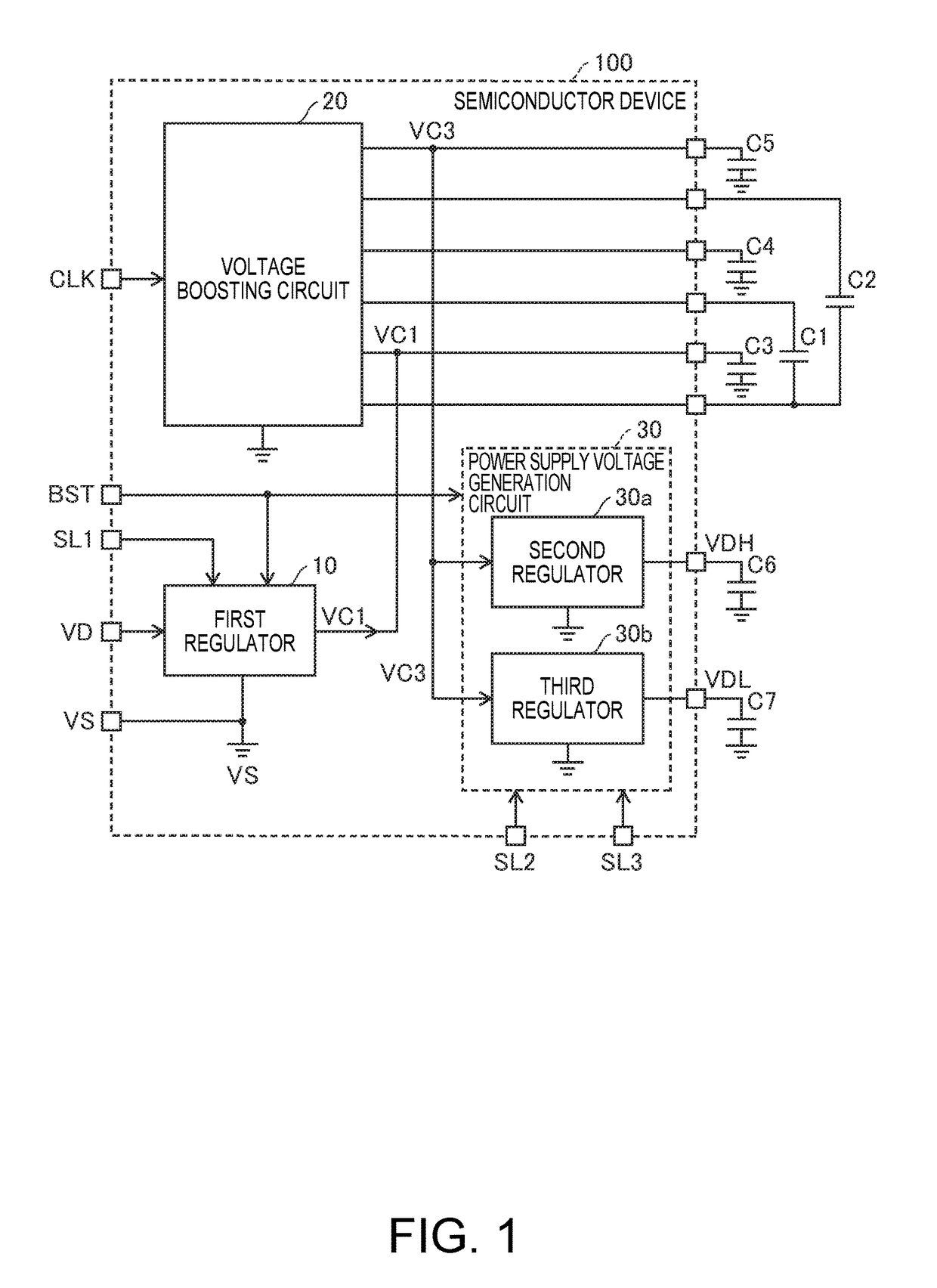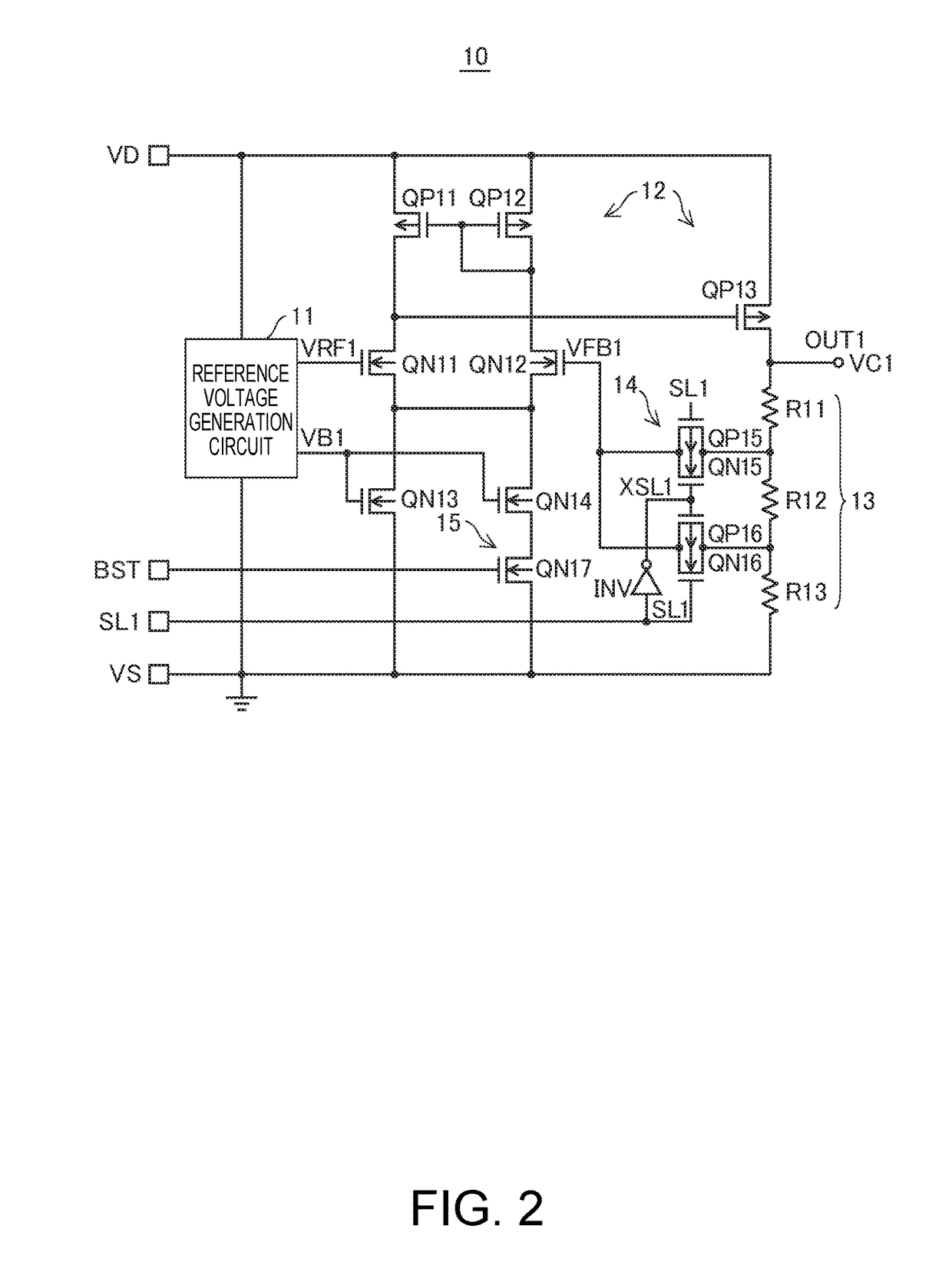Semiconductor device, power supply circuit, and liquid crystal display device
a technology of power supply circuit and semiconductor, applied in the direction of instruments, static indicating devices, etc., can solve the problems of affecting driving capability, affecting the output voltage of the first voltage boosting circuit, and the output voltage of the second voltage boosting circuit significantly decreasing, so as to improve the ability to drive the load, reduce the influence of voltage boosting operation, and improve the effect of driving load
- Summary
- Abstract
- Description
- Claims
- Application Information
AI Technical Summary
Benefits of technology
Problems solved by technology
Method used
Image
Examples
Embodiment Construction
[0026]Hereinafter, an embodiment of the invention will be described in detail with reference to the drawings. Note that like constituent elements are assigned like reference numerals to omit redundant descriptions.
[0027]Power Supply Circuit
[0028]FIG. 1 is a block diagram showing an exemplary configuration of a power supply circuit according to an embodiment of the invention. As shown in FIG. 1, this power supply circuit includes a semiconductor device 100 according to an embodiment of the invention, and a plurality of external capacitors C1 to C7, which are connected to a plurality of terminals in the semiconductor device 100. The semiconductor device 100 includes a first regulator 10, a voltage boosting circuit 20, and a power supply voltage generation circuit 30. The power supply voltage generation circuit 30 includes a second regulator 30a and a third regulator 30b.
[0029]The first regulator 10 is connected to two input terminals, to which an input voltage (VD-VS) is supplied fro...
PUM
 Login to View More
Login to View More Abstract
Description
Claims
Application Information
 Login to View More
Login to View More - R&D
- Intellectual Property
- Life Sciences
- Materials
- Tech Scout
- Unparalleled Data Quality
- Higher Quality Content
- 60% Fewer Hallucinations
Browse by: Latest US Patents, China's latest patents, Technical Efficacy Thesaurus, Application Domain, Technology Topic, Popular Technical Reports.
© 2025 PatSnap. All rights reserved.Legal|Privacy policy|Modern Slavery Act Transparency Statement|Sitemap|About US| Contact US: help@patsnap.com



